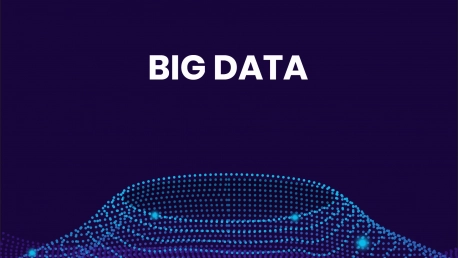Big data has become a game-changer in the field of human resources (HR), bringing about a revolution in managing the workforce. HR teams are now equipped with vast amounts of data that come with great variety and velocity, enabling them to make well-informed strategic decisions. The integration of big data into HR practices allows for the optimization of various functions, from talent acquisition to performance evaluation.Organizations are increasingly capitalizing on this data-driven approach, and those who harness it effectively can expect to see improvements in the efficiency and effectiveness of their HR operations. As large datasets are analyzed, HR can uncover trends, predict outcomes, and tailor strategies to meet specific organizational needs.However, navigating through the complexities of big data requires a thoughtful approach. HR professionals need to ensure the quality and relevance of the data they use while also respecting privacy and ethical considerations.With the right implementation, big data has the potential to significantly enhance the HR landscape, offering a smarter, streamlined path to managing human capital. The challenge lies in strategically leveraging this information without being overwhelmed by its sheer volume. As the field of HR continues to evolve with these technological advancements, it’s poised to redefine the way organizations understand and manage their most valuable asset—their people.
Revolutionizing Talent Acquisition
Big data has introduced a new dimension to talent acquisition by enabling HR professionals to evaluate candidates using refined automated tools. Sophisticated algorithms trawl through mountains of performance data and social media profiles to predict the best potential hires. This not only streamlines the recruiting process but enhances the quality of candidate selection. By analyzing patterns in successful employee histories, companies can identify which candidate attributes correlate with on-the-job success.These huge datasets also allow for more nuanced assessments of the labor market. Recruitment campaigns can be targeted more effectively, steering clear of saturating already dense talent pools and instead, pinpointing areas where competition for skilled workers may be less intense. The capability of big data to refine the recruitment process heralds a significant leap from the reliance on traditional methods, propelling talent acquisition into a new frontier of efficiency and precision.
Enhancing Employee Retention
The collection and analysis of big data are instrumental in illuminating the dynamics of employee retention. By examining diverse datasets that include employee feedback, turnover rates, and various engagement metrics, HR teams are empowered to identify what drives satisfaction and loyalty. These insights can lead to the implementation of strategic initiatives that address issues proactively, helping to forge an environment where employees feel valued and connected to their work.For instance, data analytics can reveal specific drivers of attrition within an organization, enabling targeted retention strategies. If the data suggest that work-life balance is a key factor for employee turnover, HR can focus on policies that promote flexibility and personal well-being. The consequence is not only an improvement in individual employee satisfaction but a ripple effect throughout the organization leading to greater overall retention.
Harnessing Performance and Productivity
Performance and productivity metrics offer a goldmine of information for HR departments when boosted by the power of big data analytics. Scrutinizing this data can bring to light patterns and trends that inform how best to support and develop staff. For example, the analysis might show that employees achieve peak productivity when they engage in collaborative projects as opposed to working solo, prompting HR to encourage more teamwork.Furthermore, by coupling performance data with individualized employee feedback, companies can customize development programs to better serve their workforce. This serves the dual purpose of aligning employee growth with company goals and ensuring individuals feel their personal development is supported. A high-performance culture is thus fostered not through intuition but informed, data-driven strategies.
Forecasting to Preempt Challenges
Big data extends its reach into the future by equipping HR departments with predictive analytics. With these tools, professionals can anticipate changes in workforce demands, highlight potential skill shortages, and strategically plan for succession. Proactivity in these areas positions organizations well ahead of future challenges, allowing for a seamless response when changes in strategy or staffing are required.For instance, predictive models can identify when certain roles are at risk of becoming obsolete, enabling HR to guide those employees toward retraining and redeployment. Equally, the early detection of rising star performers can trigger succession planning for key leadership roles. The result is an organization that not only responds to the present but is prepared for the unexpected, ensuring its resilience and adaptability in a changing business landscape.
Overcoming the Big Data Challenges
The pursuit of a big data strategy within HR is laden with challenges that must be navigated with care. The financial cost and technological complexity of implementing a big data infrastructure are significant hurdles, often requiring substantial investment. Moreover, the rarity of HR professionals skilled in data analytics further complicates the endeavor, as does the resistant culture within some quarters of management who may prefer traditional, gut-feel decision-making.The intensive nature of data preparation — collecting, cleaning, and ensuring data quality — cannot be understated. Without high-quality data, the insights gleaned can be misleading or outright incorrect, having the potential to steer HR strategies amiss. Overcoming these challenges necessitates a committed and sustained effort to upskill staff, foster a data-centric culture, and invest in the necessary tools to effectively harness big data’s potential.
Navigating Privacy and Compliance
With the advent of GDPR and similar data protection laws, the privacy and compliance of employee data have risen to the forefront of HR considerations when implementing big data strategies. The ethical dimensions of data collection and analysis must align with stringent legal standards to protect employee information and safeguard the organization against breaches and penalties.Organizations are obligated to handle employee data with the utmost sensitivity, ensuring transparency in their data practices and providing clear opt-outs for personal data collection. The balance between leveraging data for insights and respecting employee privacy is delicate, necessitating robust data governance policies and continuous vigilance against potential missteps in data handling. Only through careful adherence to these legal and ethical codes can HR departments maintain trust while benefiting from big data.
Implementing Big Data in HR Workflows
Incorporating big data into HR workflows calls for a well-thought-out approach. By starting with an iterative process, HR can avoid being overwhelmed by the deluge of data and instead focus on key areas that align with the organization’s business objectives. This ensures that data collection and analysis efforts are purpose-driven, leading to actionable insights.Ensuring data is effectively filtered and cleaned is paramount; irrelevant or inaccurate data can muddy analytical outcomes, leading to poor decision-making. Utilizing a variety of data sources helps paint a more comprehensive picture of HR landscapes, from internal performance metrics to external labor market statistics. By prioritizing these strategies, HR departments can make the most of big data, unlocking the potential for enhanced decision-making and a keen competitive edge.In harnessing big data for smarter workforce management, the astute HR professional can transform the very nature of their role, evolving from administrative gatekeeper to strategic advisor powered by the rich insights derived from a robust data analytics capability.









